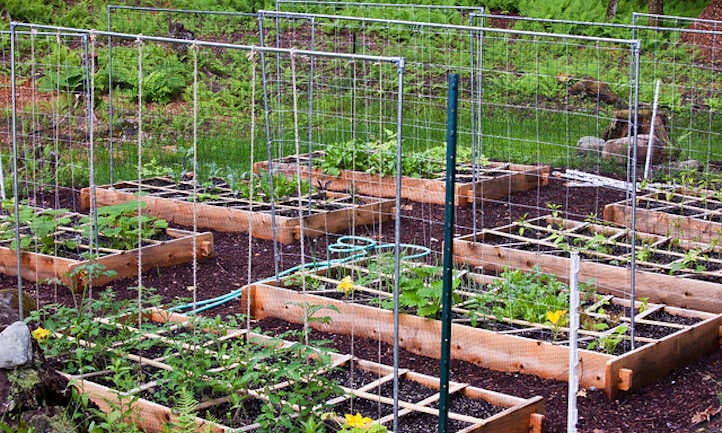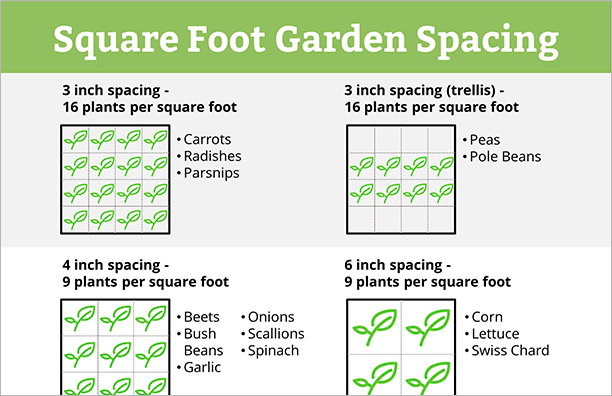How To Maximize Your Raised Bed Garden With The Right Spacing
Title:How to Maximize Your Raised Bed Garden with the Right Spacing
Introduction:
Raised bed gardens are a great way to grow vegetables, flowers, and herbs. They offer a number of advantages over traditional in-ground gardens, including improved drainage, better soil aeration, and easier access for gardening.
One of the most important factors in maximizing the yield of your raised bed garden is proper plant spacing. If you plant your plants too close together, they will compete for resources and not thrive. On the other hand, if you plant them too far apart, you will waste space.
In this blog post, I will discuss the importance of plant spacing in raised bed gardens. I will also provide some tips on how to determine the correct spacing for different types of plants.
Main Content:
The amount of space you need to plant each type of vegetable will vary depending on the plant's mature size, growth habit, and root system. In general, you should follow the spacing recommendations on the seed packet or plant tag.
Here are some additional tips for determining the correct spacing for your raised bed garden:
- Consider the mature size of the plant. For example, tomatoes and peppers need a lot of space to grow, so you should plant them at least 18 inches apart.
- Think about the growth habit of the plant. Some plants, such as bush beans, grow upright, while others, such as vining tomatoes, spread out. Be sure to give vining plants enough space to spread their roots and leaves.
- Consider the root system of the plant. Some plants, such as carrots, have shallow roots, while others, such as potatoes, have deep roots. Be sure to give plants with deep roots enough space to grow their roots without competing with other plants.
In addition to following the spacing recommendations on the seed packet or plant tag, you can also use the following formula to determine the correct spacing for your raised bed garden:
Mature plant width + 12 inches = minimum spacing
For example, if a tomato plant has a mature width of 12 inches, you should plant it at least 24 inches apart (12 inches + 12 inches = 24 inches).
Conclusion:
By following these tips, you can maximize the yield of your raised bed garden by planting your plants at the correct spacing. This will help your plants to grow healthy and productive, and it will also help you to save space in your garden.
The spacing between raised beds should be at least 3 feet wide (4 feet is even better). This gives plants room to grow, and also gives you room to get by. If you need access for a wheelbarrow, you may need to make the spacing even wider.
For more information about raised bed spacing, visit this website: https://www.gardendesign.com/vegetables/raised-beds.html. This website has a detailed guide on how to plan and build a raised bed, including information on spacing.
FAQ of raised bed spacing
- How much space should I leave between raised beds?
The amount of space you need to leave between raised beds depends on a few factors, including the size of your beds, the type of plants you're growing, and how much access you need to the beds. A good rule of thumb is to leave at least 3 feet of space between beds, but you may need more space for larger beds or plants that spread out a lot.
- What is the best way to space plants in a raised bed?
The best way to space plants in a raised bed depends on the type of plant. Some plants, like tomatoes and peppers, need more space than others, like lettuce and carrots. A good resource for finding the ideal spacing for different plants is the Square Foot Gardening: https://www.squarefootgardening.com/ website.
- What are the benefits of proper raised bed spacing?
There are several benefits to proper raised bed spacing. First, it allows your plants to grow to their full potential. When plants have enough space, they can develop strong root systems and produce more fruit or vegetables. Second, proper spacing helps to prevent diseases and pests. When plants are too close together, they can create a humid environment that is conducive to the spread of disease. Third, proper spacing makes it easier to access your plants for watering, weeding, and harvesting.
- What are some common mistakes people make when spacing raised beds?
Some common mistakes people make when spacing raised beds include:
* Spacing plants too closely together.
* Not leaving enough space between beds.
* Not considering the type of plants when spacing them.
* Not taking into account the size of the mature plants.
- How can I avoid making these mistakes?
To avoid making these mistakes, it's important to do your research before you start planting. Read up on the ideal spacing for the plants you want to grow, and take into account the size of the mature plants. You can also use a raised bed spacing chart to help you plan your garden.
Image of raised bed spacing
- Image 1: This image shows the spacing between two raised beds. The beds are 4 feet wide, and there is a 3-foot walkway between them. This gives plenty of room for plants to grow and for people to walk through.

- Image 2: This image shows a raised bed with a variety of vegetables planted in it. The vegetables are spaced evenly apart, so they have enough room to grow.

- Image 3: This image shows a raised bed with a walkway running through the middle. The walkway is 2 feet wide, which gives enough room for people to walk through without having to step on the plants.

- Image 4: This image shows a raised bed with a trellis for climbing plants. The trellis is 3 feet wide, which gives the plants plenty of room to grow.

- Image 5: This image shows a raised bed with a variety of flowers planted in it. The flowers are spaced evenly apart, so they have enough room to grow and bloom.

- Image 6: This image shows a raised bed with a path leading to it. The path is 2 feet wide, which gives enough room for people to walk through without having to step on the plants.

- Image 7: This image shows a raised bed with a border of rocks. The rocks help to define the bed and prevent the soil from eroding.

- Image 8: This image shows a raised bed with a layer of mulch on top. The mulch helps to retain moisture in the soil and suppress weeds.

- Image 9: This image shows a raised bed with a variety of herbs planted in it. The herbs are spaced evenly apart, so they have enough room to grow and thrive.

- Image 10: This image shows a raised bed with a water feature in the middle. The water feature adds a touch of beauty to the bed and helps to attract wildlife.

Post a Comment for "How To Maximize Your Raised Bed Garden With The Right Spacing"